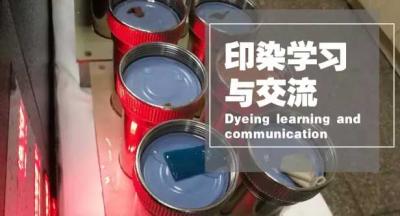Textile manufacturing is a major industry globally, providing a large amount of materials for clothing, interior decoration, and various other end uses. Dyeing is an essential production process in textile production, and poor color fastness has become one of the biggest pain points in the dyeing process.
Why is Wet Friction Fastness Relatively Poor?
The problem of poor wet friction fastness in dark-colored dyed products has long been a technical challenge for dyeing and finishing workers.
Inherent Characteristics
The relatively poor wet friction fastness of dyes is determined by some of their inherent characteristics. For example, the water solubility of dyes themselves makes them susceptible to hydrolysis and lose their reactivity to fibers under alkaline conditions. Additionally, covalent or ether bonds formed through the reaction of dyes with fiber molecules are easily hydrolyzed and broken.
Molecular Affinity
Reactive dyes, direct dyes, and other water-soluble dyes have a certain affinity for water molecules. According to the theory of molecular diffusion, the diffusion rate of molecules is higher in gas as a medium than in liquid, and higher in liquid than in solid. As water molecules serve as a medium for the transfer of dye molecules between the contact surfaces of fabrics, which are liquid, the diffusion rate of dye molecules is increased. Therefore, the wet friction fastness of the same tested dye substance is significantly lower than the dry friction fastness.
Processes
In production practice, analyzing the causes of poor wet friction fastness strengthens the control and measures of each process to compensate for the defects of dyes and improve the trial friction fastness of products.
How to Improve Friction Fastness?
Thorough Pre-treatment
Good pre-treatment is half the success of successful dyeing. Proper pre-treatment helps the dye to bond with the fiber. Insufficient pre-treatment can cause the dye to float on the surface of the fiber, resulting in reduced friction fastness.
Reasonable Selection of Dyes
Different dyes have different directness and fixing rates. The higher the directness and the lower the fixing rate, the worse the friction fastness after dyeing. Choosing dyes with moderate directness and high fixing rates helps improve the friction fastness of the dyed materials.
Improvement of Soap Washing and Post-treatment
For dyes that have not been fixed and float on the surface of the fiber, effective improvement of friction fastness can be achieved through proper soap washing and post-treatment washing. For example, hydrogen peroxide soap washing can improve friction fastness of reactive dyes, and fixing agents can improve the friction fastness of the dyed materials. However, if the soap washing is insufficient and cationic fixing agents are used, it may lead to a decrease in friction fastness.
Improvement of Fabric Surface Smoothness
For cotton greige fabric, it is necessary to choose greige fabric with uniform yarn count and smooth surface. Starting from improving the characteristics of post-dyed fabric, treating the fabric with biological enzyme polishing, etc., can increase the smoothness of the fabric surface and thus improve its wet friction fastness.
Use of friction fastness Improvers
In addition to the above aspects, the use of good friction fastness improvers can significantly improve the dry and wet rub fastness of fabrics. friction fastness improvers are generally resin-based finishing agents that improve the friction fastness of fabrics through cross-linking reactions of resins. When choosing friction fastness improvers, attention should be paid to the impact on hand feel, color and light fastness, and environmental performance.



 English
English  日本語
日本語  Español
Español  tiếng việt
tiếng việt  Türkçe
Türkçe  ไทย
ไทย  українська
українська  हिंदी
हिंदी  বাঙালি
বাঙালি  اردو
اردو 

